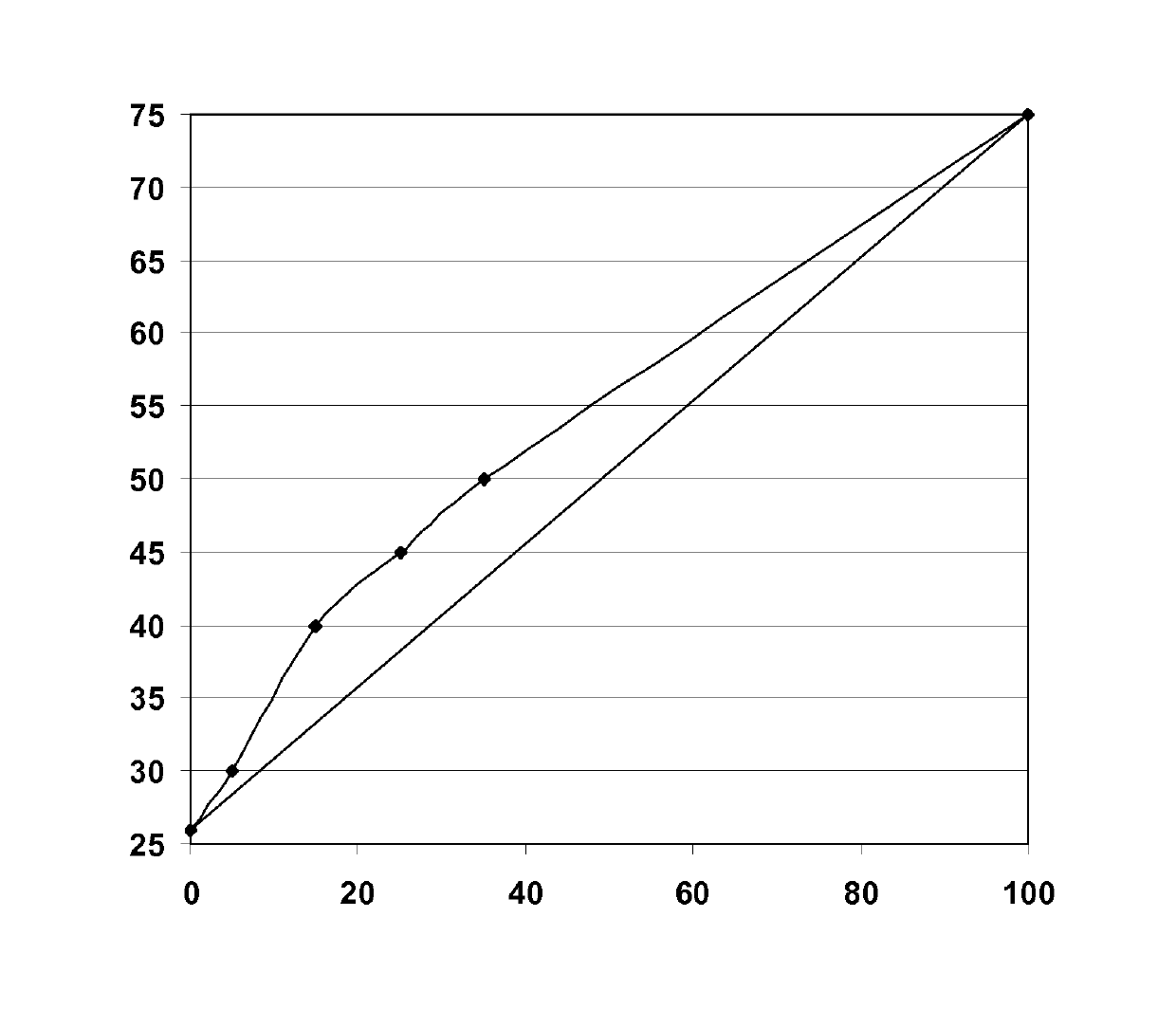Heat transfer compositions having improved miscibility with lubricating oil
a technology of lubricating oil and composition, which is applied in the direction of lubricant composition, refrigeration machine, lighting and heating apparatus, etc., can solve the problems of imperfect miscibility of certain lubricating oils, damage to the ozone layer of chlorinated compounds, and inability to allow the system to function correctly, etc., to achieve good miscibility with certain lubricating oils and low gwp , good energy performan
- Summary
- Abstract
- Description
- Claims
- Application Information
AI Technical Summary
Benefits of technology
Problems solved by technology
Method used
Image
Examples
example 1
ty of HFO-1234yf with Lubricating Oil
[0112]The miscibility of HFO-1234yf with a lubricating oil based on polyalkylene glycol and / or polyol ester is investigated in this example.
[0113]The polyalkylene glycol is the oil PAG ND8 supplied by Nippon Denso.
[0114]The polyol ester is the oil POE Ze-GLES RB68 supplied by Nippon Oil.
[0115]The procedure is as follows:[0116]put the lubricating oil in a 16.4-ml glass tube (sealable tube) weighing the amount put in exactly;[0117]add the desired amount of refrigerant (heat transfer compound);[0118]seal the tube by welding it;[0119]completely immerse the tube in a thermostatically controlled bath filled with water at room temperature. The tank used is made of Plexiglas, which makes it possible to visualize the fluid / oil mixture. The tubes are arranged vertically in tube holders;[0120]close the tank at the top with metal plates for protection in case of breakage of a tube;[0121]heat the water gradually and observe the temperature starting from which...
example 2
tability of the Lubricating Oil
[0125]The thermal stability of the lubricating oils used in example 1 is investigated in this example.
[0126]The tests are carried out according to standard ASHRAE 97-2007.
[0127]The test conditions are as follows:[0128]mass of lubricant: 5 g;[0129]temperature: 200° C.;[0130]duration: 14 days.
[0131]The tests were carried out by adding 5000 ppm of water to the lubricating oil, which is considered to be a relatively high water content.
[0132]The lubricating oil is put in a 16.4-mL glass tube. The tube is then drawn out under vacuum and then welded to seal it, and placed in a stove at 200° C. for 14 days.
[0133]At the end of the test, the oils are analyzed:[0134]with respect to their color, by spectrocolorimetry (for a slight coloration the results are given in Hazen, up to 700 and for a strong coloration the results are given in Gardner, from 3 to 15);[0135]with respect to water content (measurement by Karl Fischer coulometry);[0136]with respect to the acid ...
PUM
| Property | Measurement | Unit |
|---|---|---|
| wt. % | aaaaa | aaaaa |
| wt. % | aaaaa | aaaaa |
| wt. % | aaaaa | aaaaa |
Abstract
Description
Claims
Application Information
 Login to View More
Login to View More - R&D
- Intellectual Property
- Life Sciences
- Materials
- Tech Scout
- Unparalleled Data Quality
- Higher Quality Content
- 60% Fewer Hallucinations
Browse by: Latest US Patents, China's latest patents, Technical Efficacy Thesaurus, Application Domain, Technology Topic, Popular Technical Reports.
© 2025 PatSnap. All rights reserved.Legal|Privacy policy|Modern Slavery Act Transparency Statement|Sitemap|About US| Contact US: help@patsnap.com

